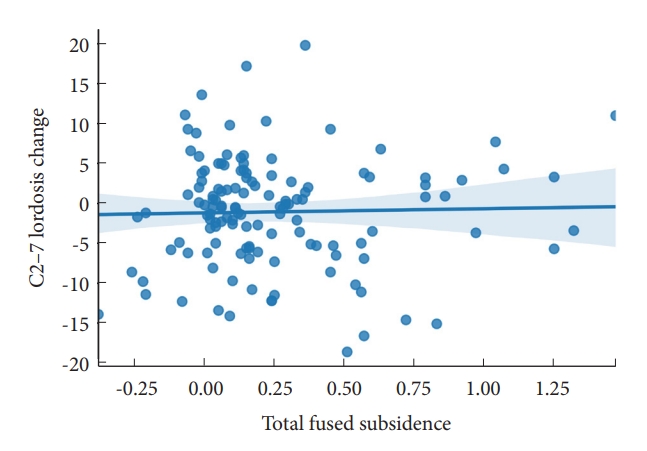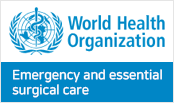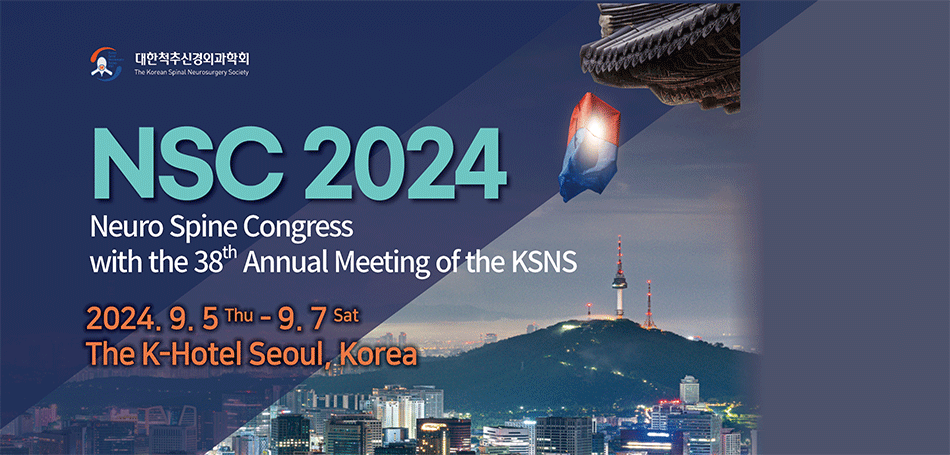- Search
|
|
||
Abstract
Objective
Methods
Results
SUPPLEMENTARY MATERIALS
Supplementary Table 1.
Supplementary Table 2.
Supplementary Table 3.
NOTES
Conflict of Interest
SKC: IP royalties from Globus Medical and paid consultant from Stryker: JSK: paid consultant from Stryker. Other authors have nothing to disclose.
Funding/Support
This study received no specific grant from any funding agency in the public, commercial, or not-for-profit sectors.
Author Contribution
Conceptualization: AD, UNI, JSK, SKC; Data curation: AD, CG, EAG, PJF Jr, AMR, UNI, BZ, JSK, SKC; Formal analysis: AD, CG; Methodology AD, CG, EAG, PJF Jr, AMR, UNI, BZ, PMAA, JM, JSK, SKC; Project administration: UNI, JSK, SKC; Visualization: AD, CG; Writing - original draft: AD, CG, EAG; Writing - review & editing: PJF Jr, AMR, UNI, BZ, PMAA, JM, JSK, SKC.
Fig. 1.

Fig. 2.
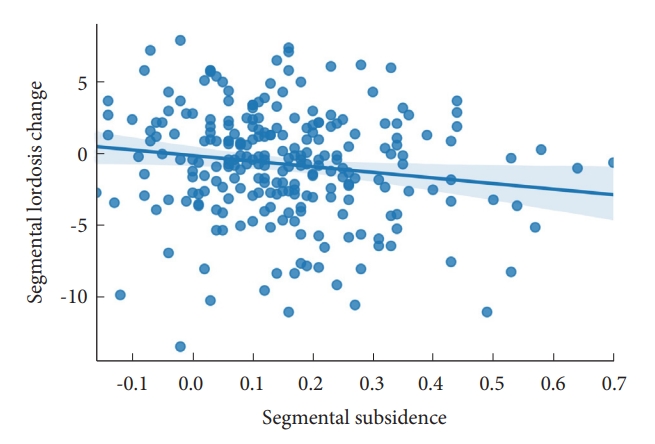
Table 1.
Table 2.
| Variable | Pearson r | p-value |
|---|---|---|
| Segmental subsidence (n = 244) | ||
| Segmental lordosis change | -0.154 | 0.016* |
| C2–7 lordosis change | 0.015 | 0.811 |
| cSVA change | 0.057 | 0.376 |
| Total fused lordosis change | -0.055 | 0.393 |
| Total fused subsidence (n = 131) | ||
| C2–7 lordosis change | 0.026 | 0.767 |
| cSVA change | 0.019 | 0.832 |
| Total fused lordosis change | -0.066 | 0.456 |
Table 3.
| Variable | Beta | 95% CI | p-value |
|---|---|---|---|
| Segmental subsidence (n = 244) | |||
| Segmental lordosis change | -3.78 | -7.15 to -0.42 | 0.028* |
| C2–7 lordosis change | 0.91 | -4.58 to 6.41 | 0.743 |
| cSVA change | 0.45 | -0.52 to 1.43 | 0.358 |
| Total fused lordosis change | -3.30 | -8.19 to 1.59 | 0.185 |
| Total fused subsidence (n = 131) | |||
| C2–7 lordosis change | 2.99 | -0.47 to 6.45 | 0.089 |
| cSVA change | -0.21 | -0.82 to 0.39 | 0.485 |
| Total fused lordosis change | -0.28 | -3.14 to 2.58 | 0.847 |
The segmental subsidence model controls for cage-to-body ratio, the level of the fusion, the position of the level with respect to the fusion, cage type, age, sex, smoking, and osteopenia. The total fused subsidence model controls for the number of levels, cage type, sex, age, smoking status, and osteopenia.
CI, confidence interval; cSVA, cervical sagittal vertical alignment.
REFERENCES
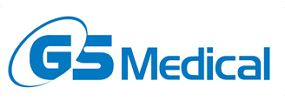
- TOOLS








